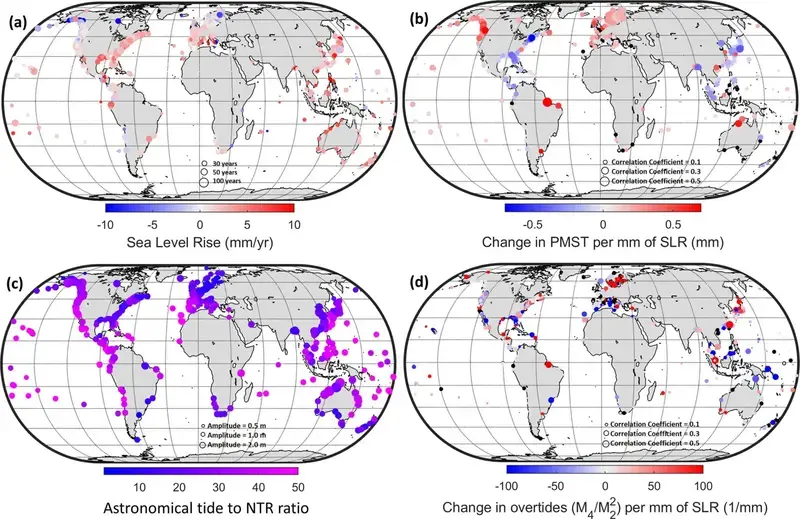A group of American researchers studied potential maximum storm tides to assess global changes in the dynamics of the World Ocean. The study’s authors predict an increase in the level of storm surges worldwide by the middle of the current century.
Approximately 250 million people currently live in areas prone to annual coastal floods. If carbon emissions do not decrease, this number will increase to 340 million by the middle of the century and 640 million by the end of the century. Sea level rise is a serious environmental problem. And it’s not even about results, it’s about predictions because those are hard to calculate. However, it has already been reported that the average level of the World Ocean will rise by more than one meter by the end of the current century.
However, the elimination of this level adds uncertainty to the water level forecast in the coastal zone, where tides and water fluctuations must be taken into account. Climate changes are known to cause atmospheric pressure anomalies, changing the movements of winds and currents, which can affect waves and storm surges. In some regions (e.g. Northern Europe), mean ocean levels have fallen, while in others (coastal areas of the United States) the potential for tidal flooding has increased.
A group of researchers from the United States has proposed a new global metric for assessing changes in the World Ocean: potential maximum storm surges. They calculated this value and examined its relationship with sea level. To do this, scientists used global hourly data on tides from tide gauges (devices that measure water levels) around the world. An article containing the results was published in the journal AGU Developments.
The authors found that mean sea level is rising in most areas (79%). This is East Asia, the southwestern coast of Europe, the eastern Gulf of Mexico, and northern Australia. However, the opposite effect has been observed along the coasts of Alaska, Canada and Northern Europe, where the average level has decreased in recent years.
Researchers calculated potential maximum storm tides from the sum of harmonic tides, water surge and mean sea level. According to the authors, the value of the maximum has become the only opportunity for global analysis of diurnal, semi-diurnal and mixed tidal dynamics. Scientists predict that the strongest tidal waves will occur in the tropics, with maximum storm waves increasing by an average of 20% by mid-century compared to 2000.
The authors also note that traditional approaches do not take into account fluctuations in mean sea level, so in regions where this indicator increases, the storm surge potential also increases. This could lead to an underestimation of the risk of coastal inundation in almost a third of the places studied (for example, in the Western Pacific and North Atlantic oceans), the researchers say. It turns out that micro-tidal (10-150 centimeters), meso-tidal (2-4 meters) and regions with diurnal intervals are the most sensitive to sea level rise.













